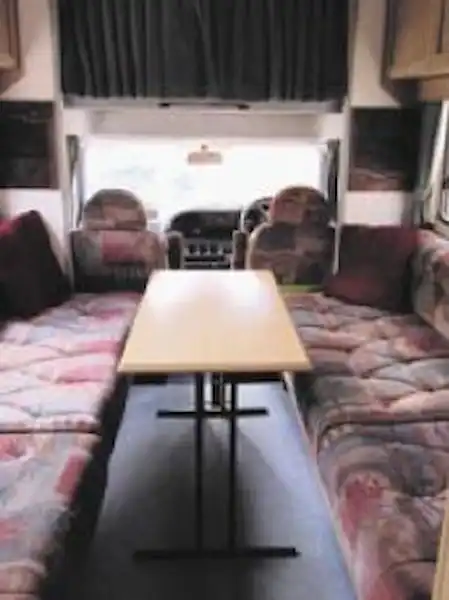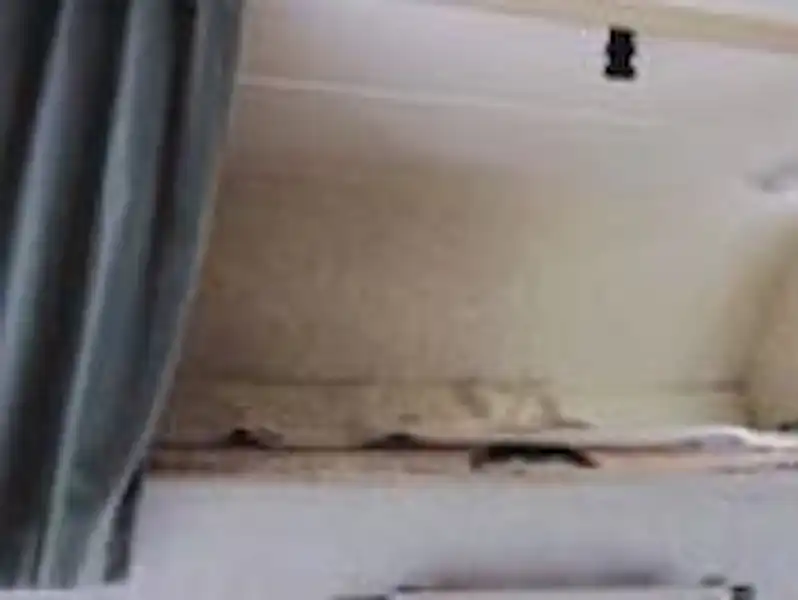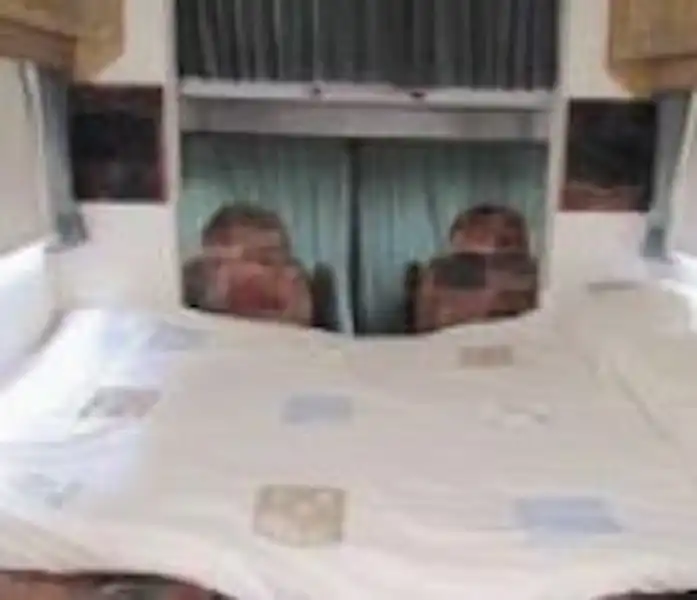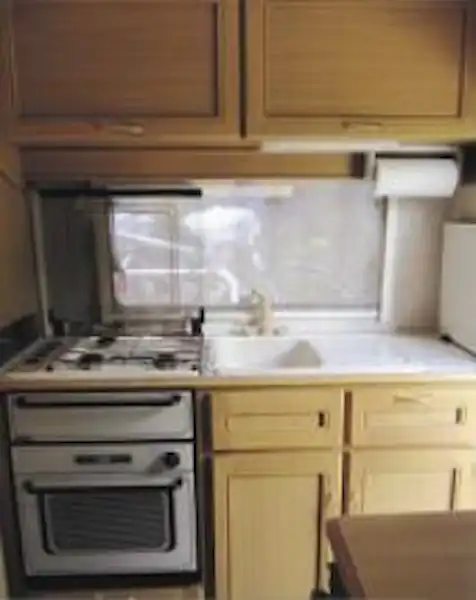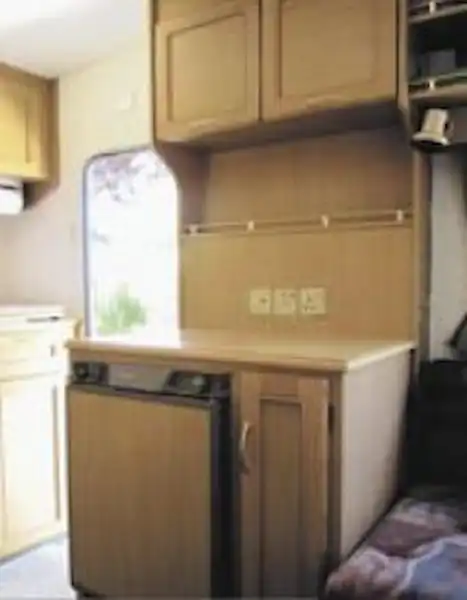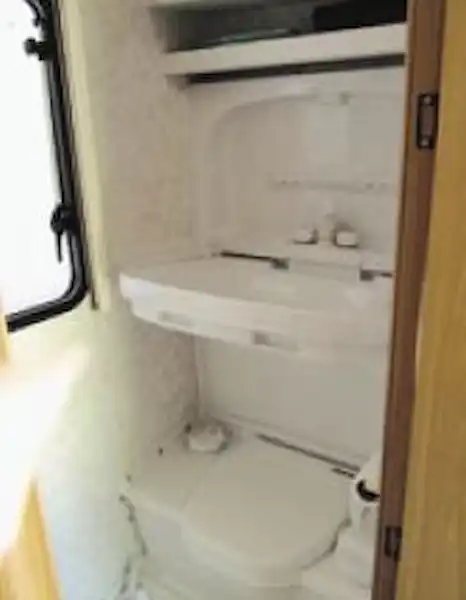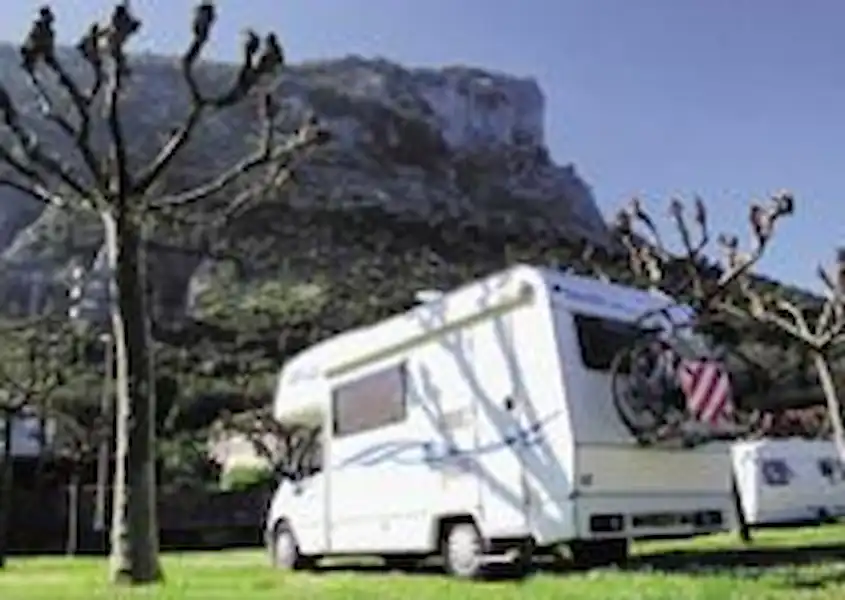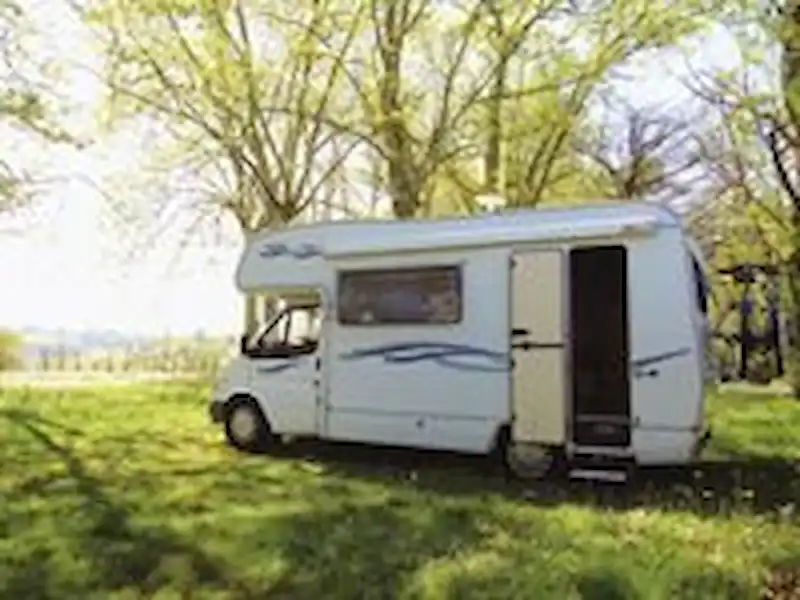Key Features
| Model Year | 1999 |
| Class | Overcab Coachbuilt |
| Base Vehicle | Ford Transit |
| Engine Size | 2.5TD |
| Maximum Weight (kg) | 3,300 |
| Berths | 4 |
| Main Layout | Front Lounge |
At a glance
Full review
Motorhome review of the 1999 Herald Squire 400E. This review was published in the February 2012 issue of MMM.My husband Phil and I had lived happily on a classic wooden yacht for eight years, the first five or so of those years with the younger two of my three teenage children. However, by 2009 the crew, sorry the children, had all flown the nest. We soon realised that the yacht was shortly going to be too big for just the two of us to handle and started to look for alternatives.
We had re-discovered a love of camping in 2008, but soon started to wonder about the advantages of motorhomes. This usually happened whilst sitting in the living area of our rather small tent, watching Phil cooking in the doorway and trying to avoid getting too much rain in the pasta.
YOUR HOME GOES TOO
The similarity to yachting was obvious: you take your home with you and have quite a large amount of freedom in where you travel, but without the tides or gale warnings. Yes, this had definite possibilities! We had hired a motorhome for a short period whilst touring in Australia a few years ago, and we’d loved the whole concept of the freedom and spontaneity of travelling where and when we wanted.
After much discussion and heart-searching, our yacht was listed with a broker and we began researching motorhomes. It took 18 months to find a buyer and we put that time to good use. We had a fairly clear idea about our ideal layout – eight years living in the relatively small space of a classic yacht had honed our requirements – but we wanted to keep an open mind. We looked at everything from pop-tops and panel van conversions, to the hugest Winnebago-style RV and fifth wheelers. In the end, we decided that six to seven metres was the optimum length for comfortable living, without being so big that we would worry too much about narrow country lanes or parking issues.
Our initial deliberations had us settling on either a U-shaped rear lounge or, my particular favourite, a Lunar with rear bench seats and little flip-top table in between them. However, a chance meeting led us to consider an end
kitchen layout instead. We definitely wanted an overcab coachbuilt and, although we didn’t envisage ourselves clambering up and down a ladder (not with Phil’s dodgy knees), we knew it would be invaluable for storage, not to mention for the occasional visit from an offspring or two.
MEETING MONTY
Finally, at the end of August 2009, the ideal buyer was found for our yacht Misty Morn and off we went, with money in our sweaty little hands (well, in the bank actually) to search in earnest. For peace of mind, we had decided to purchase through a dealer, and had been to Martins of Exeter on numerous occasions; the sales staff had always been friendly and helpful, even though they knew we wouldn’t be in a position to buy until we had sold the yacht.
We did our usual stroll around the site and went inside a Ford Herald Squire 400E, looked around, looked at each other and said: “This is it! We’ve found our ’van!” It was perfect, and although 10 years old, was in very good condition and had obviously been well cared for. A mutually agreeable deal was struck, which included the fitting of a bike rack, and arrangements were made for the collection date of ‘Monty’, as our new motorhome was promptly christened.
VITAL STATISTICS
Monty is based on a Ford Transit, with a 2.5-litre turbo diesel motor and five-speed gearbox. Weighing in at a modest 3,300kg, including a very practical 720kg payload, and measuring just 6m long and 2.17m wide, he is the ideal size. The cab seats are very comfortable: both are adjustable and have two armrests, making for a relaxing drive, even on long journeys. The only downside is the lack of airbags and a CD player – instead, a radio/tape combination. The radio reception is good however, and we could fit a new radio/CD player if we wished. The storage in the cab is reasonable, with a pocket on the driver’s door, a good-sized lockable glove box and a large dashboard well, which is extremely useful for holding all the paraphernalia needed on a journey.
Fully laden, we normally expect a fuel consumption of 25mpg and a very comfy ride. Having suffered the very scary experience of a tyre blow-out on the M5 (luckily it was the nearside front tyre), we are very pleased that we have a spare wheel, which is contained in a wind-down device below the chassis.
STORING TALENTS
The overcab is very spacious and comfortable and access is almost the full width of the vehicle, with a cargo net for safety and curtains to hide all the accumulated junk, erm, possessions. It has one side window with a light overhead. The bed cushions are all removable and the outer half can be pushed forward for easier access to the cab. With 510mm headroom, it’s not quite high enough to sit up, but as we only use it for storage, that isn’t a problem. It amazes me how much stuff fits in there: at the moment we have a double duvet, six pillows, three sleeping bags, a blanket, two large outdoor chairs (for us), one small outdoor chair (for visitors), a stool, an outdoor table, a first aid kit, a box of books, a windscreen cover, a set of Bose speakers, a laptop, an electric piano (for Phil), a guitar (for Phil) and a set of juggling clubs (again for the multi-talented Phil!).
INSIDE STORY
Behind the driver and passenger seats are two 1.85-metre bench seats. These were a huge selling point for us, as we like to sit and read with our feet up and this was not possible in the dinette versions we’d seen. We can comfortably seat six people, if they’re not too large. The two bench seats pull out in a one-third/two-thirds combo, converting to either two single beds, a perfectly adequate double bed, or for fun-loving types, a triple bed!
The space under the offside side is taken up with the gas locker and water tanks. The Carver hot water boiler runs off either mains or gas, and takes 20-30 minutes to heat a full tank of water. The fresh water tanks hold 77 litres. The space under the passenger side seat is empty and so makes a good storage area, although it is only accessible from inside. There are overhead cupboards all round, along with a double open shelf on each side.
After a cupboard door handle came off in my hand, we decided to substitute the slightly flimsy originals with tasteful brass replacements. We are very pleased that the cupboards go right up to the roof, thereby not allowing a dust haven on top... life is too short for dusting! The upholstery is the only part which shows the age of the vehicle, as it’s a little worn, and so on the list of things to replace, eventually. Also, it’s in a rather bold beige/dark red/green pattern, which is nevertheless, quite practical. The moss green carpet and curtains co-ordinate rather well, and it did give me a good excuse to buy new matching cushions! All habitation windows have both flyscreens and blinds.
The wardrobe (and table storage) is on the offside. This provides a good amount of stowage, with shelf and hanging rail. We have come to appreciate the versatility of the freestanding table, although I thought at first I would find it inconvenient having to put the table up and down. But it only takes a moment, and it saves carrying another table for outdoors, although we did buy another low table for casual use. The Carver Trumatic gas fire is situated beneath the wardrobe and makes the interior very cosy on cold evenings. The side of the wardrobe also houses the battery switches, water tank level indicator and hot water boiler controls.
Opposite the wardrobe and adjacent to the stable-type door is the fridge. This can be run on gas or mains and, when the engine is running, it’s powered by 12 volts. It’s a good size, with a small icebox. There are cupboards below, above and to the side, with a handy shelf too. The worktop above is designed to house the television, but
we much prefer to listen to the radio, play music or games, read or socialise, so we use this area for food preparation. Whilst we were researching motorhomes, we were always amazed at how little thought appears to have gone into the kitchen area. We came to the conclusion that they must have been designed by men who don’t cook!
STEAMING AWAY
The end kitchen includes a three-burner gas hob, with grill and oven, and a decent-sized oblong sink with drainer. There is a lift-up worktop, which can go over the sink, but as we use the fridge unit’s worktop for food preparation, we have access to both the sink and cooker at the same time, which doesn’t seem to be the norm in many other models. There is plenty of cupboard space around the kitchen area, with a cutlery drawer below the drainer.
The washroom (with shower) is at the rear offside corner. The Thetford toilet has a 20-litre capacity waste cassette, and this is great if you have a number of days to go between emptying, but it does mean that it is rather heavy when full. We usually carry it between us, as I don’t want Phil to put his back out and have to explain why to a chiropractor! If you were a solo emptier, you’d probably want to invest in a trolley, which could always be stored in the spacious overcab!
The washbasin is very large and drops down above the toilet, and it’s by far the roomiest we’ve seen in any motorhome. The shower is arranged in front of the toilet, with a pull-round shower curtain. Although it is reasonably roomy, we prefer to use site facilities – to avoid steaming Monty up too much... I really should rephrase that!
WARMING TO TRAVEL
With plentiful lighting, a roof vent and large windows, Monty has a very light and airy feel inside. However, as we spend much of our time in warmer climes, we would have preferred more skylights. We often park in places where it can be inconvenient to open the windows wide, such as French aires, so we don’t always get as much fresh air inside as we’d like. We would also have liked a flyscreen on the door, but this would have been difficult with the stable-type that’s fitted. There’s a Fiamma wind-out awning on the nearside, giving good protection from rain and sun. We prefer the latter, which is why we spent six months touring Spain, Portugal and France in summer 2010. Monty performed above and beyond expectations, providing a comfort and freedom that far outweighed our sailing trips.
During this time, Monty even became famous, and was featured on Radio Devon and Cornwall on a number of occasions! We love travelling with Monty and hope for many more summers touring in the years to come!
This motorhome review was originally published in the February 2012 issue of MMM. Click here to download the pdf for free.
If you don't already have Adode Acrobat to be able to open a PDF, download it for free

Expert motorhome advice to your door!
Why not subscribe to one of our fabulous magazines and get expert advice, travel ideas, technical help and all the latest news for your motorhome and your motorhome adventures!
Want to know more about MMM magazine?
Every month MMM has articles written by motorhomers who have been there and done it, from great UK and European (and further afield) tours, campsite reviews, owners' reports and DIY projects among other things. MMM's tests, reviews and expert buying guides are not to be missed. MMM's technical advice is a must and includes everything from weekend jobs to longer-term DIY projects. And much more!
About MMM magazineWant to know more about What Motorhome magazine?
Every issue of What Motorhome magazine provides essential buying advice for anyone looking to buy a new motorhome or campervan or upgrade their existing model. With a pedigree of over 30 years of offering the best motorhome and campervan buying advice, every issue of What Motorhome includes more new motorhome and campervan reviews than you will find in any other magazine.
About What MotorhomeWant to know more about Campervan magazine?
Campervan is the exciting monthly magazine that will give you all the inspiration you need to explore the world in your campervan. Every issue is packed with real-life campervanning experiences, inspiring travel ideas in the UK and further afield, the best campsites to stay on, campervan road tests and reviews of the latest models, and much more!
About Campervan magazine

